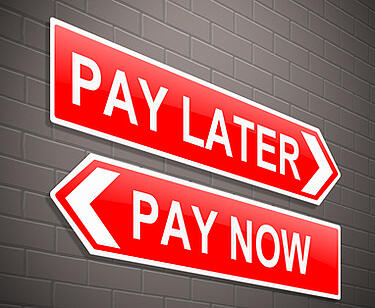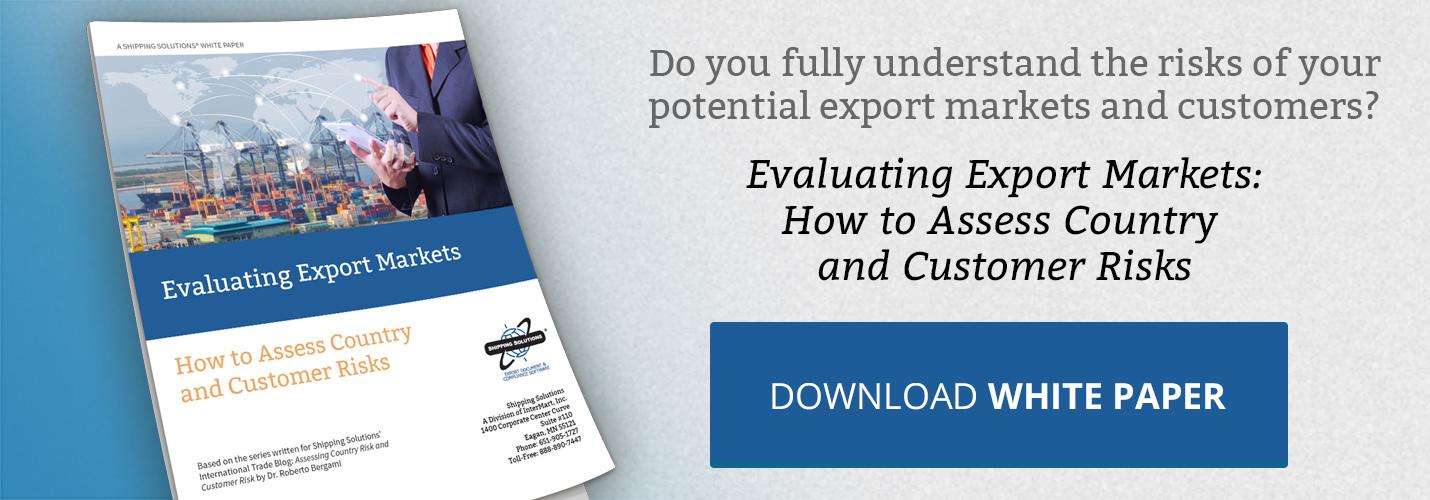The International Trade Blog International Sales & Marketing
Export Finance: Why Does It Take So Long to Get Paid?
On: October 15, 2018 | By:  Chris Lidberg |
4 min. read
Chris Lidberg |
4 min. read
 You have shipped your product, payment is due, and the buyer claims they have made payment. As far as you can see, however, nothing has happened.
You have shipped your product, payment is due, and the buyer claims they have made payment. As far as you can see, however, nothing has happened.
Does this sound familiar? I hope not, but if it does, let’s take a look at what might be causing the delay.
Export Payment Options
Of the four primary payment options—cash in advance, open account, letters of credit and collections—you can only really forecast when you might receive payment with two of them: cash in advance and letters of credit. The timing of payment under collections and open account is entirely at the discretion of the buyer.
If your buyer purchased your goods with the understanding that they were going to pay for them in advance, they know you are not going to ship the goods until you have received payment. The buyer is motivated to make the payment.
Whether payment is by cash in advance, collection, or open account, let’s assume that the buyer has instructed the bank to make payment but you haven’t received it. What could be causing the delay?
Wire Transfers
If payment is being made via wire transfer, you might think that an electronic payment would be instant. Unfortunately, that’s not so. Let’s look at what might be slowing the payment.
- Every payment, world wide, has a two-day valuation period. Remember that these are international payments; someone has the foreign currency risk and, generally speaking, there is a two-day settlement period. These are two banking days, not calendar days. In other words, days when the bank are open for business.
- The number of banks in the payment chain can make a difference. If you have your business account with your small town bank, they may be looking to a larger correspondent bank to receive the payment from overseas and then transfer it to your bank. The reverse can also be true if the buyer banks with a smaller bank. The buyer’s bank may be looking to a larger correspondent to help with the transaction.
- The efficiency of the banks involved in the transaction will also impact how quickly or slowly payment is made. There are parts of the world known for their efficiency, while there are other areas that have a more leisurely attitude.
- Holidays. If banks are closed, payment delays will occur. In the United States, we celebrate July 4. The banks are closed here, but are open for business in other countries. Even if banks are closed on only one end of the transaction, that will still cause delays. I once saw a calendar showing holidays that are celebrated worldwide. Not one day was holiday free.
- People in the Middle East observe their weekends on Thursday and Friday. That leaves only three days during the week to transact business.
- Last, but certainly not least, the instructions received by your bank from the buyer’s bank must be accurate and complete. If they aren’t, your bank must receive clarification before payment can be made. Contact your bank to make sure you’re giving the correct information to the buyer in order for them to electronically transfer funds to your account.
Seven days is a reasonable time to wait to receive payment on a wire transfer. If it takes considerably longer than that, contact your bank to see if they can help streamline the payment process so you can get paid sooner.
Letters of Credit
Back when I was working at the bank, it was not uncommon for someone late in the day to walk into the letter of credit area with their documents and think they were going to walk out with a check within the hour. Unfortunately, it just doesn’t happen that fast.
It’s pretty common knowledge that the vast majority of exporters dread the letter of credit process. However, other than cash in advance, it’s the only payment method where you are able to estimate when payment might be received.
So, just how long is it going to take to get paid?
Let’s say your goods are ready for shipment, and your freight forwarder picks them up on the first of the month. You’ve arranged inland transportation from your warehouse in the Midwest to the port of loading, which will probably take three or four days. Once the goods arrive at the port, it may take up to a week to get the goods on board the vessel and get the original bill of lading. We’re now at the 10th or 11th day of the month.
It will take you a few days to gather the remaining documents required by the letter of credit. (If the letter of credit requires any of the documents be legalized or consularized by a Consulate office, which is usually located in New York, you can add at least seven days to the process.) Once you’ve collected these documents, you would typically courier them to the bank, which adds another day to the process. We’re now at the 12th or 13th day of the month.
Once the bank has received your documents, according to Uniform Customs & Practice for Documentary Credits (UCP 600), it has seven days to examine them and determine if they comply with the terms of the letter of credit. These are banking days, not calendar days. However, most banks today will try to examine the documents within two to three banking days. We’re now at about the 15th day of the month.
If your documents comply and if the letter of credit contains reimbursement instructions, plan on an average of another five banking days before payment is made. So now we’re at least up to the 20th or 21st day of the month.
If there are discrepancies in your documents, which is not an unusual occurrence, add another week to the payment process, during which time your bank is getting payment approval from the issuing bank. We are now up to the 27th or 28th day of the month.
If the letter of credit doesn’t contain reimbursement instructions, add at least another week to the payment process. Your bank will have to courier the documents to the issuing bank for their review before payment is effected.
I tell people in my seminars that they should expect to wait about a month from the time their products leaves their facility until they receive payment. Please keep in mind that the time frames I’ve given here are rough estimates, but it does give you a pretty good idea how long the letter of credit process can take.
This article was first published in August 2002 and has been updated to include current information, links and formatting.

About the Author: Chris Lidberg
Ms. Chris Lidberg was an independent consultant in the area of international banking and Letters of Credit. Ms. Lidberg had more than 25 years of international banking experience, most recently as Vice President at U.S. Bank where she was part of the International Trade Services Division. She was responsible for selling the bank's international products to both customers and prospects, and conducting Letter of Credit seminars.
During her 25 years in banking, 15 of those years were spent in the Letter of Credit area, holding various supervisory positions, later to manage the Letter of Credit department. MS. Lidberg went on to become the manager of International Operations where she was responsible for managing not only Letters of Credit, but also International Collections, Money Transfers, Cash Letters, Investigations and all Telex and SWIFT activities for the bank.




